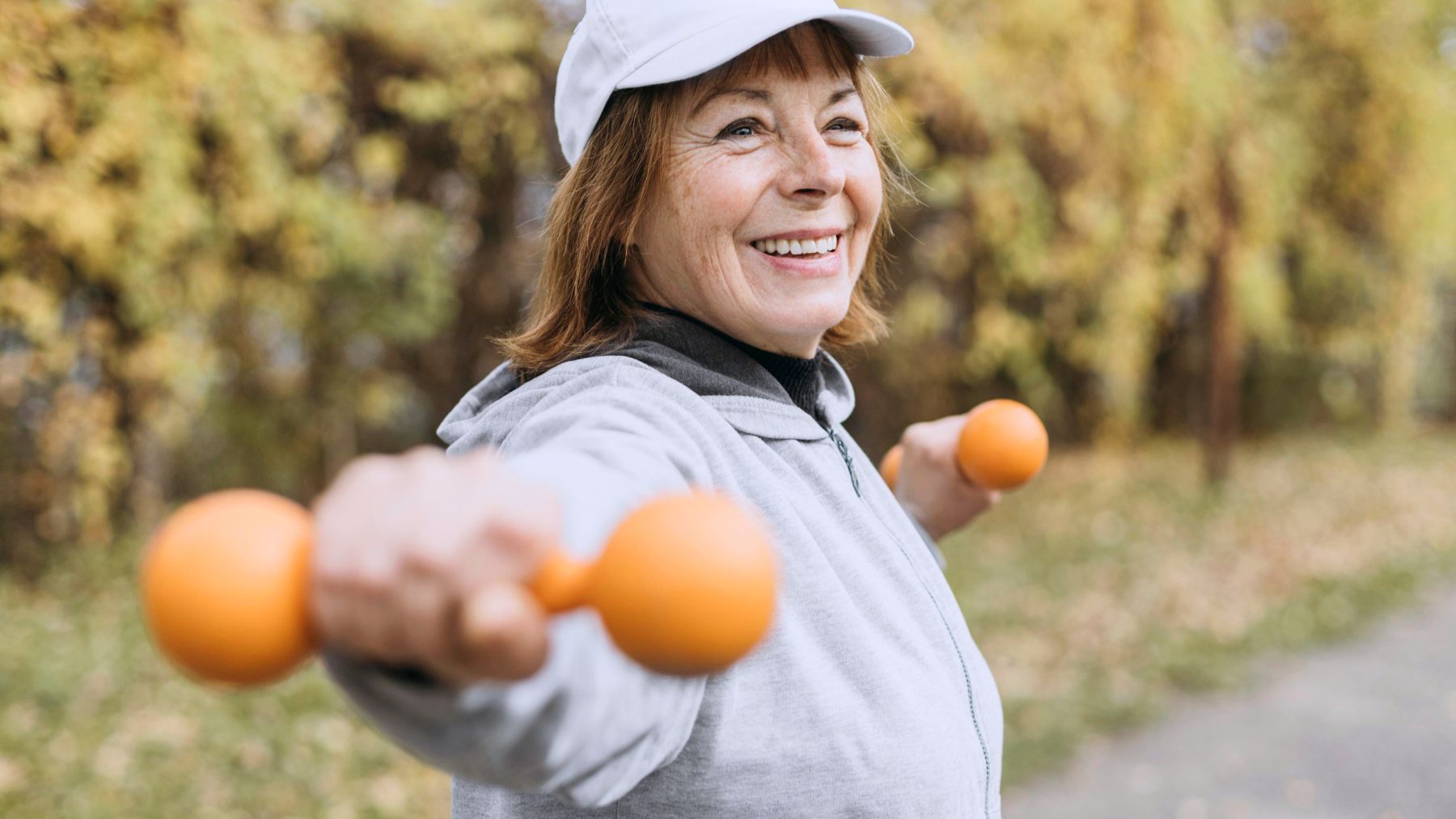For many women in their 50s and 60s, movements that used to feel effortless—like stepping off a curb or turning quickly—can suddenly feel wobbly. That’s because as we age, our muscles, joints, and coordination naturally weaken. With the right kind of movement, it’s possible to rebuild stability and confidence.
One exercise stands out for its ability to strengthen, stretch, and stabilize all at once: the downward dog splits to knee drives. Trainers say this dynamic, yoga-inspired move works especially on the muscles that support balance and posture. Here’s why it’s so effective for women over 55 and how it fits into a strength-building routine.
How to do the downward dog splits to knee drives
This move challenges your body in all the right ways. The downward dog splits to knee drives combines balance, flexibility, and core strength in one flowing motion.
Start in a downward dog position, with your hands and feet on the mat and your hips raised to form an inverted V. Lift one leg behind you into a three-legged downward dog. Then, shift your weight forward into a plank position and draw your raised knee toward your chest. Hold briefly, extend the leg back up, and repeat the movement several times before switching sides.
Each repetition forces your core and stabilizing muscles to stay engaged as your weight shifts. Your arms and shoulders support your body, your glutes and hamstrings power the leg lift, and your standing leg works hard to keep you aligned. The constant balance adjustments build coordination and awareness.
Beyond balance, this exercise helps loosen tight hamstrings and hips, which often contribute to stiffness and poor posture. Over time, it improves flexibility, coordination, and strength in the muscles that support your upright and steady posture.
More exercises that help improve balance after 55
The downward dog sequence is not the only one worth adding to your routine. Mixing in other exercises keeps your workouts engaging and challenges your body in new ways. Here are a few expert-recommended options:
- Single-leg stands: Stand tall and lift one foot slightly off the floor. Hold for 20 to 30 seconds, then switch legs. This builds ankle and hip stability.
- Chair squats: Lower yourself toward a chair as if to sit, then rise back up. It strengthens your thighs, glutes, and core.
- Heel-to-toe walks: Walk in a straight line, placing one foot directly in front of the other. It sharpens coordination and gait control.
- Tree pose: Stand on one foot and rest the other foot on your inner thigh or calf. Focus on a fixed point to help maintain balance.
Good balance is the foundation of moving with ease and confidence. By practicing these moves just a few times a week, you will build the strength and coordination to improve stability and mobility in your daily life. The sequence of the downward dog is especially effective, as it targets the muscles that matter most for balance. With regular practice, this routine will leave you feeling more in command of your movements.

